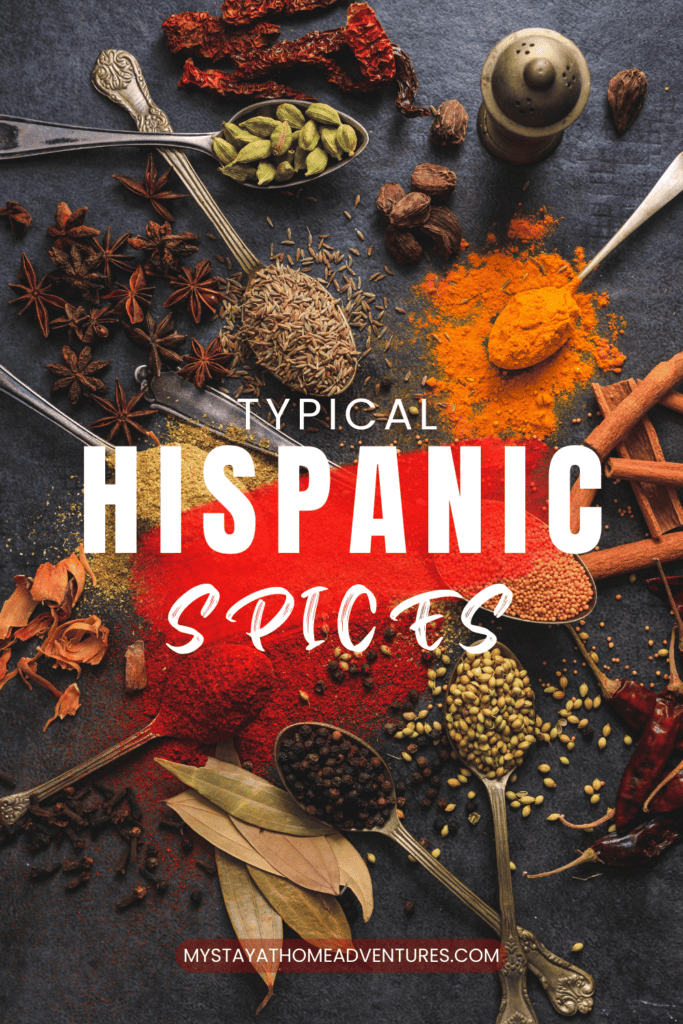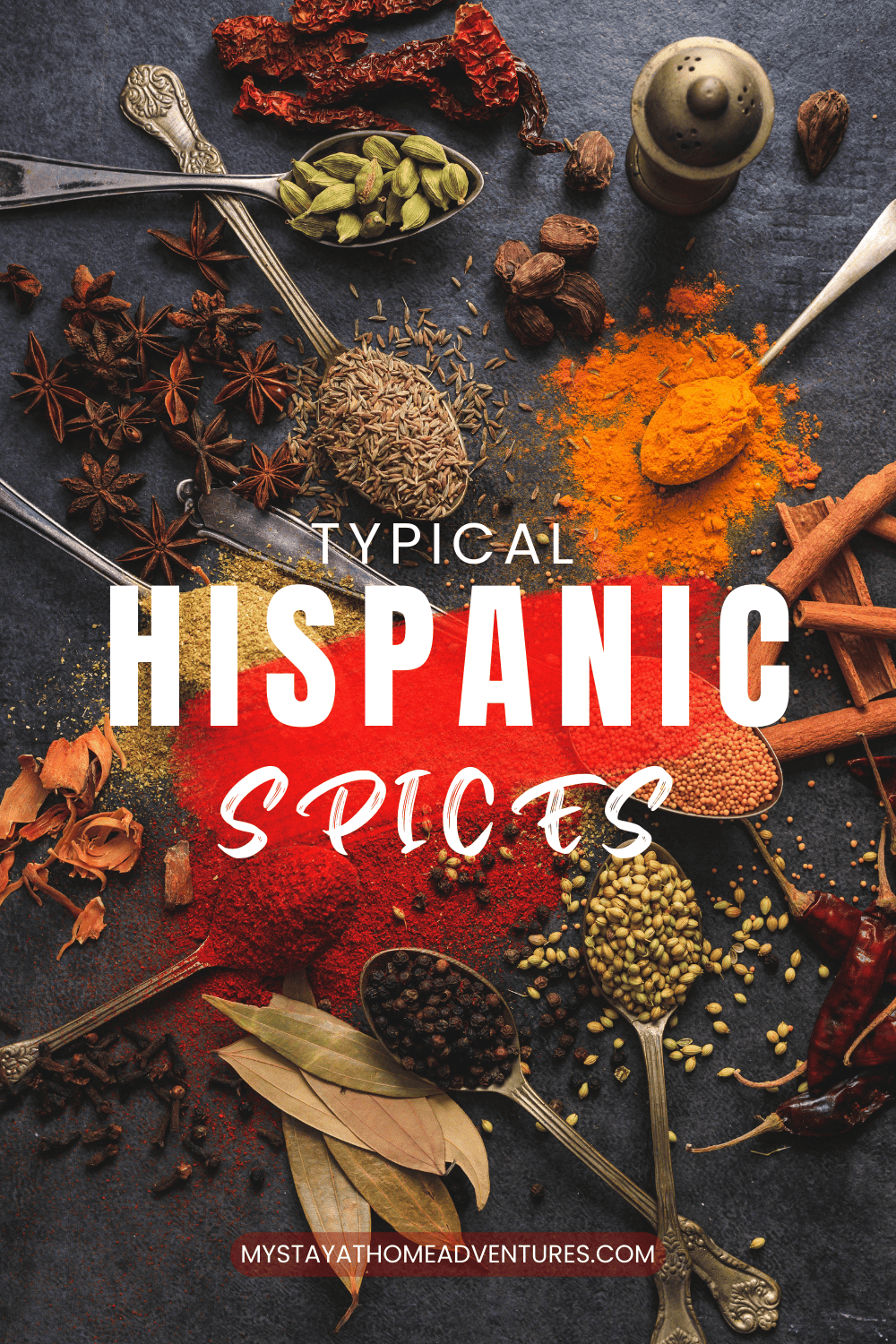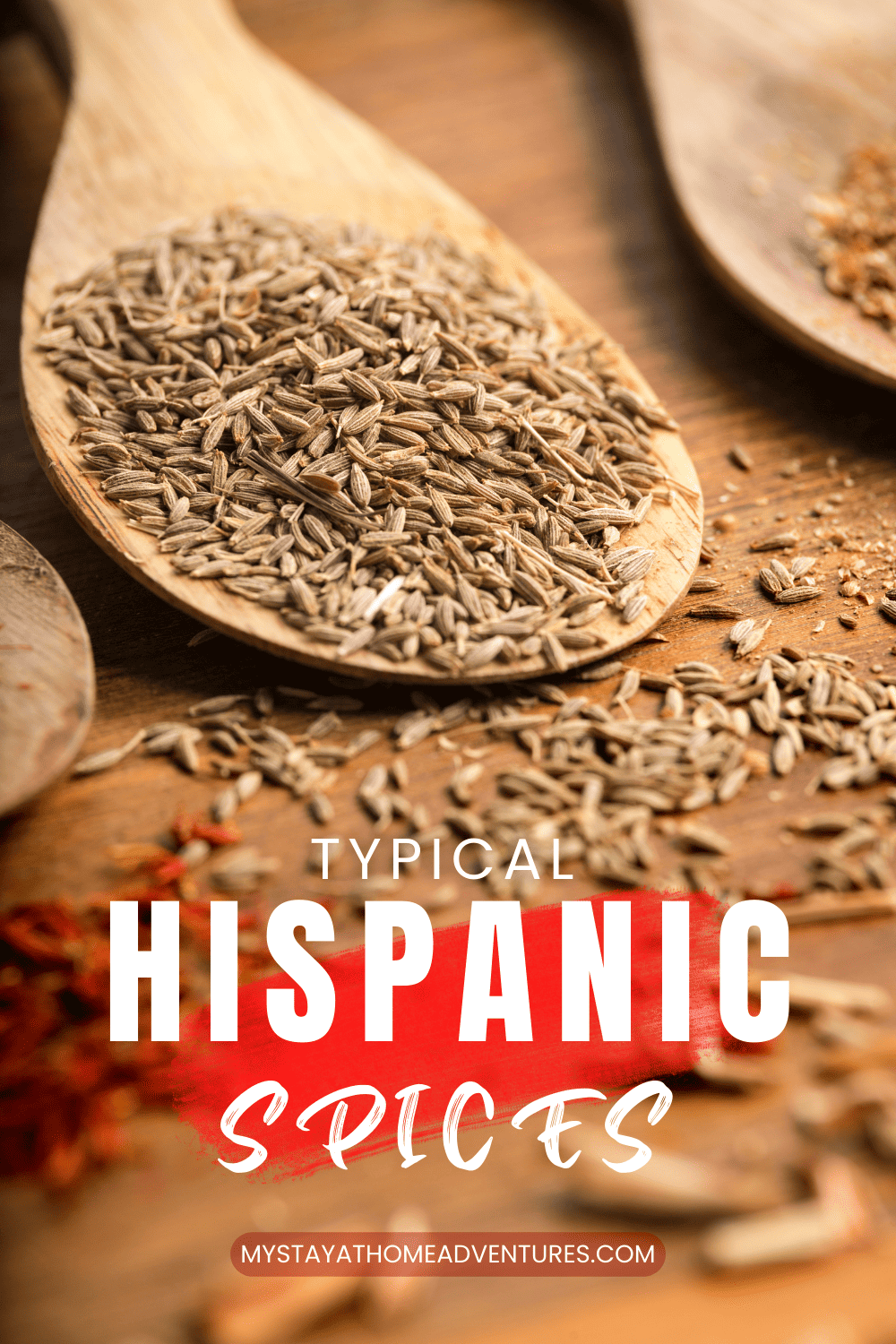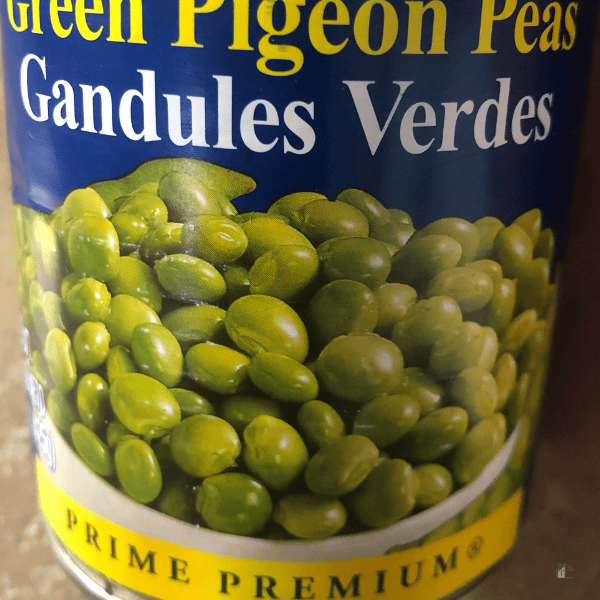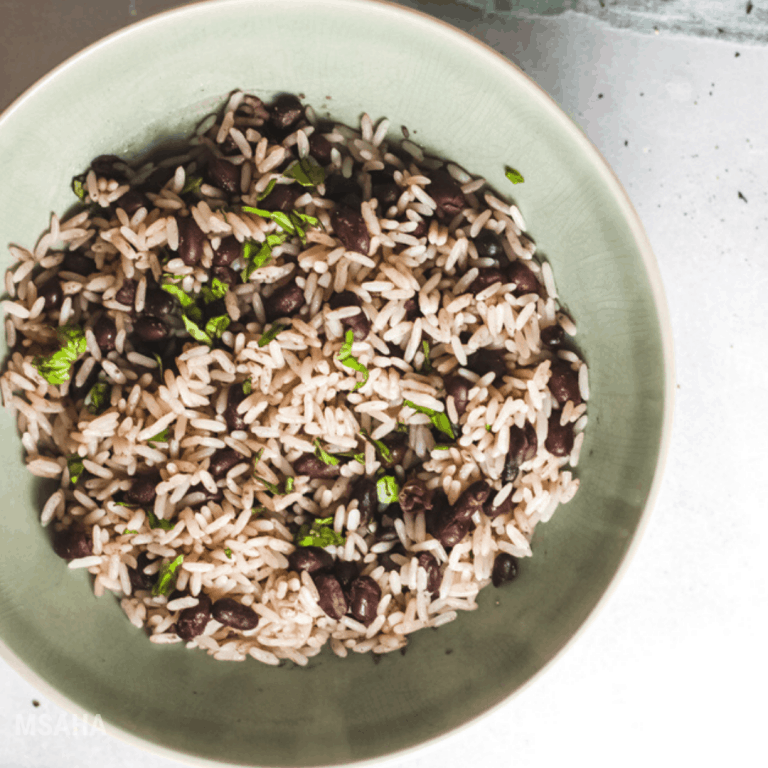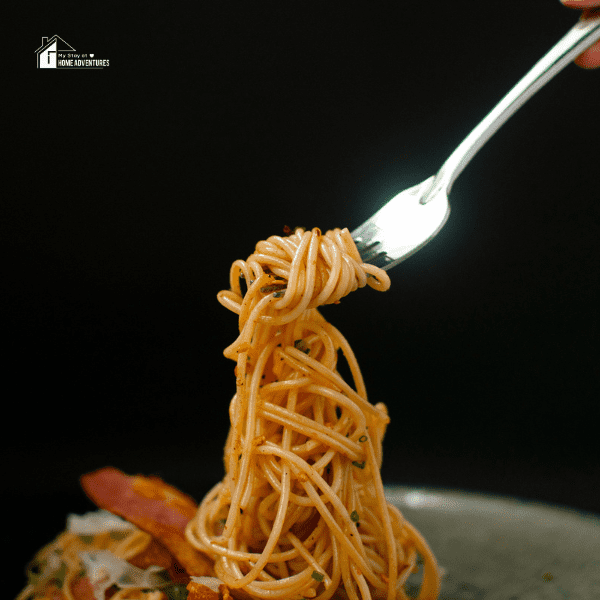What are Typical Hispanic Spices?
This post may contain affiliate links which might earn us money. Please read my Disclosure and Privacy policies hereWhat are typical Hispanic spices? If you've ever savored the delicious flavors of Hispanic cuisine, you might be curious about the spices that bring those mouthwatering tastes to life. Hispanic spices are like secret ingredients that add a burst of excitement to dishes. They come from various countries in Latin America, each contributing its own unique touch to the culinary tapestry.
These spices create wonderful combinations that turn ordinary dishes into flavor-filled feasts! Mixing and matching these Hispanic spices is like creating a symphony of tastes that tickle your taste buds and make your meals unforgettable.
Whether it's the earthy warmth of cumin, the zesty kick of oregano, the vibrant hues of paprika, or the tantalizing blend of adobo, each spice contributes its own unique melody to the culinary masterpiece. So, don't hesitate to experiment with these amazing spices to create your very own kitchen symphony.
Let's embark on a flavorful journey to explore some of these vibrant spices and uncover a few fun facts along the way!
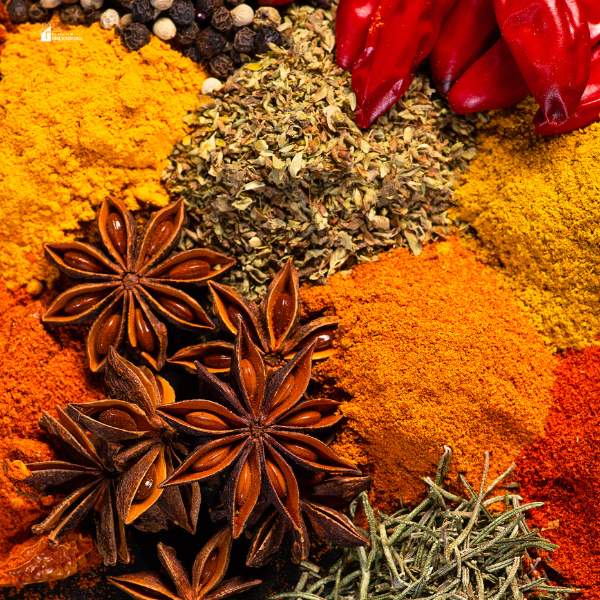
What spices are used in Hispanic food?
Hispanic cuisine is known for its rich and diverse flavors, often achieved through the use of a variety of spices. Some common spices used in Hispanic food include:
Cumin
Cumin is a common Hispanic spice that brings warmth to dishes. With its cozy, earthy flavor, it's like a flavorful blanket for your taste buds. Used often in Mexican and Tex-Mex cooking, like in chili and tacos, it adds a special touch that makes these dishes taste extra delicious.
Oregano
Oregano is a lively Hispanic spice that adds zesty excitement to meals. It's like a burst of sunshine in your mouth! Used in salsas, sauces, and more, it brings a tangy and slightly peppery flavor to dishes. Oregano's presence makes Hispanic cuisine dance with extra flavor and flair.
Paprika
Paprika comes in different varieties, such as sweet, smoked, or spicy. It adds vibrant color and flavor to dishes like Spanish rice and chorizo. This spice finds a cozy spot in dishes and enhances their appeal. Think of paprika as the chef's secret tool, turning ordinary ingredients into vibrant, mouthwatering creations that capture the heart of Hispanic cooking.
Adobo
Adobo is a seasoning blend that usually includes garlic, oregano, cumin, and other spices. It's used as a marinade or rub for meats and gives them a savory and aromatic taste. This versatile mixture elevates meats, functioning as both a marinade and rub. When applied, adobo imparts a delightful aroma and savory essence that transforms ordinary cuts into tantalizing, mouthwatering delights.
Cilantro
Cilantro (also known as coriander or Chinese parsley) is a leafy herb that adds a fresh, citrusy flavor to many Hispanic dishes, including guacamole and ceviche. Its presence is like a culinary breeze, invigorating dishes with a zesty twist. While some adore its unique taste, others find it an acquired delight due to its bold character. Cilantro's presence in Hispanic cuisine is a testament to the diversity of flavors that make each dish an exciting journey for the taste buds.
Annatto
Annatto seeds are used to make a red-orange coloring and impart a mild, slightly sweet flavor to foods. In Hispanic cuisines, annatto is often found in dishes like achiote chicken and tamales, giving them a distinct visual and taste appeal. With a delicate earthiness, this spice creates a feast for both the eyes and palate. Annatto's presence reminds us that in Hispanic cooking, flavors and colors blend harmoniously to create dishes that are not only delicious but also visually striking, making every meal a delightful sensory experience.
Coriander
Coriander seeds have a citrusy and slightly nutty flavor. They're used in both ground and whole form in various Hispanic dishes. You might also hear it called cilantro in some places! In Hispanic cooking, coriander seeds are used to give dishes a unique and delicious twist. They add a bit of tanginess and warmth that make foods like salsa and soups taste extra yummy. So, when you enjoy those tasty Hispanic meals, remember that coriander is one of the hidden heroes making them so delicious!
Saffron
Though expensive, saffron is sometimes used to add a luxurious touch to dishes like paella in Hispanic cuisines that have been influenced by Spanish traditions. Just a little bit of saffron can turn dishes golden and add a fancy flavor. Saffron is so precious that it's sometimes called the “king of spices.” So, when you taste that delicious yellow rice in your paella, you'll know that saffron is the secret behind its awesome color and taste!
Epazote
Epazote, a cool Hispanic spice, is like a flavor superhero! It's a leafy herb that's used to add a unique taste to foods. What's really fun is that it can help make beans less “musical” when you eat them. So, in dishes like black bean soup, epazote comes to the rescue by making those yummy beans easier on your tummy. It's like a magic ingredient that makes your meals taste great and keeps things extra friendly for your belly!
Chili Powder
Chili powder, a super exciting Hispanic spice, is like a flavor party in a bottle! It's a mix of ground chili peppers and other spices. Just a sprinkle can make your food taste spicy and awesome. In Hispanic cooking, chili powder adds a special kick to dishes like chili con carne and tacos. So, when you want to make your meals dance with some heat and flavor, grab that chili powder and get ready for a taste adventure!
Chipotle
Chipotle, a sizzling-hot Hispanic spice, is like a smoky flavor superhero! These smoked and dried jalapeño peppers are often used in their whole or powdered form to add smoky and spicy notes to dishes. This spice also adds a bold, fiery taste to foods. In Hispanic dishes, chipotle gives a delicious smokiness to things like sauces and meats. So, when you want your taste buds to do a happy dance with a bit of heat and a whole lot of flavor, chipotle is here to save the day!
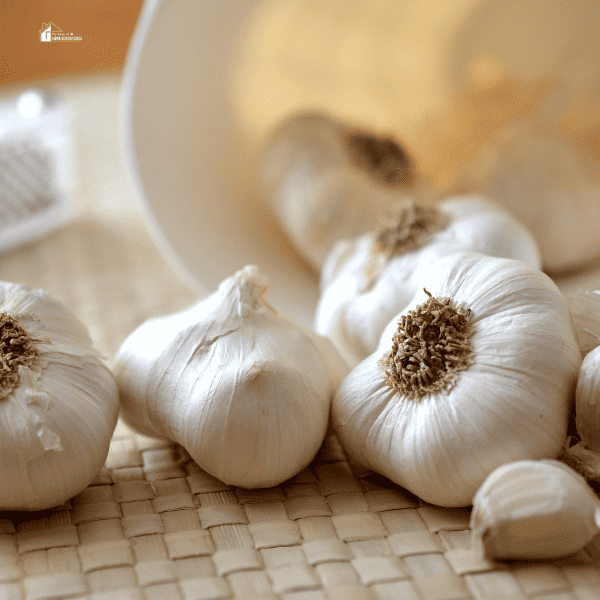
Garlic
A staple in many cuisines, garlic is widely used in Hispanic cooking to add depth and flavor to various dishes. It's a small bulb with a strong and amazing taste. It's used to make dishes taste extra delicious. In Hispanic cooking, garlic is like a secret ingredient that adds a magical touch to almost everything – from salsas to soups. Just a little bit can make your food taste fantastic! If you're a fan of yummy flavors, garlic is the enchanting ingredient you'll want to invite to your kitchen.
Onion Powder
Similar to garlic, onion powder is a convenient way to incorporate onion flavor into dishes without the texture of fresh onions. Onion powder, a kitchen magician in Hispanic cooking, is like a flavor shortcut! It's made from dried onions and adds a delicious taste without the chopping.
In Hispanic dishes, onion powder brings that wonderful onion flavor to recipes like salsas and seasoning blends. It's like having the taste of onions in a tiny, sprinkleable form. So, if you want to add a bit of magic to your meals without the tears of chopping onions, onion powder is your culinary wand!
Cayenne Pepper
This fiery spice adds intense heat to dishes like hot sauces, and it's used in moderation to bring a spicy kick to many Hispanic recipes. It is like a tiny firecracker of flavor! Just a little bit can make your mouth tingle with flavor. If you're up for a spicy adventure, cayenne pepper is here to turn your meals into sizzling sensations!
Cloves
Cloves provide a warm and slightly sweet flavor and are used sparingly to add depth to certain Hispanic dishes. They're tiny, brown spices that bring warmth to dishes. In Hispanic cuisines, cloves add a sweet and slightly spicy taste. They're used in things like stews and sauces to make them extra delicious and comforting. Imagine your food getting a cozy, flavorful hug from these small spices.
Cinnamon
Although more common in desserts, cinnamon is sometimes added to savory dishes in Hispanic cuisines to add a subtle warmth. It's a brown spice with a warm and cozy taste. In Hispanic cooking, cinnamon also adds a touch of sweetness to foods. Think of cinnamon as the magical dust that turns ordinary treats into something wonderfully delicious.
Ginger
Ginger is used in Hispanic recipes to add a hint of tang and warmth, especially in marinades and sauces. It's a knobby root with a tangy and slightly spicy taste. In Hispanic cooking, ginger adds a hint of excitement to dishes. It's used in marinades and sauces, giving them a lively kick.
Nutmeg
Nutmeg adds a warm and nutty flavor to Hispanic dishes and is often used in spice blends and desserts. It is a small brown seed with a nutty and comforting taste. In Hispanic cooking, nutmeg adds a special touch to dishes like desserts and creamy drinks. Just a pinch can make your food feel extra cozy and delightful. Imagine your meals wrapped in a gentle, flavorful embrace.
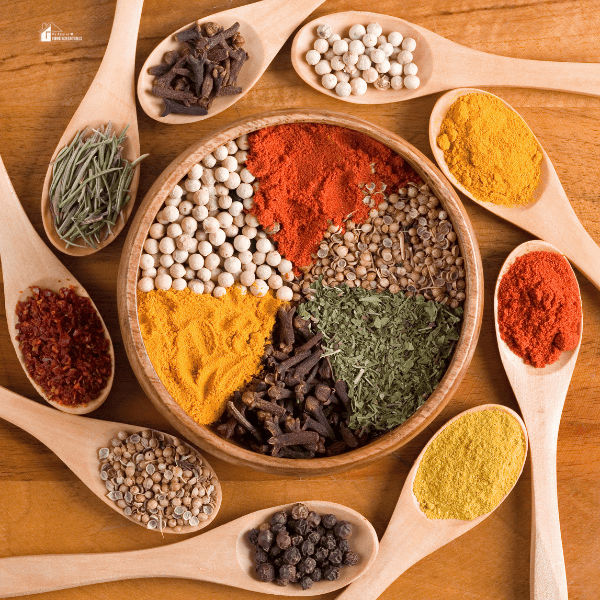
What are 5 common ingredients used in Hispanic and Latino foods?
Here are five common ingredients used in Hispanic and Latino foods:
- Rice: Rice is a staple in many Hispanic and Latino cuisines. It serves as a versatile base for many dishes, such as arroz con frijoles (rice with beans), paella, and rice and beans.
- Beans: Beans, such as black beans, pinto beans, and kidney beans, are an essential protein source in Hispanic and Latino diets. They're used in various dishes like frijoles negros (black bean soup) and refried beans.
- Corn: Corn is a significant ingredient and holds cultural importance. It's used to make tortillas, tamales, arepas, and dishes like corn-based soups and stews.
- Tomatoes: Tomatoes are widely used to create vibrant salsas, sauces, and stews that add depth and flavor to many Hispanic dishes.
- Peppers: Peppers of various types, such as bell peppers, jalapeños, and chili peppers, are essential for adding heat, color, and distinct flavors to dishes like enchiladas, chili, and salsa.
These ingredients form the foundation of many Hispanic and Latino dishes, and their creative combinations result in the rich and diverse flavors that characterize the cuisine.
What is a popular ingredient in Hispanic cuisine?
Corn is a staple ingredient in Hispanic cuisine. It takes various forms, from tortillas for tacos to tamales and corn-based stews. Corn's versatility and significance in cultural dishes make it a cornerstone of Hispanic meals.
Whether it's masa for making tortillas or corn kernels in soups, this ingredient plays a central role, in connecting generations through flavorful traditions.
This versatile ingredient's cultural significance and culinary diversity make it a true star in Hispanic cooking, embodying the spirit of heritage and flavor that defines these delicious cuisines.
